We independently evaluate all recommended products and services. If you click on links we provide, we may receive compensation.
Your body’s estrogen levels, which start decreasing during perimenopause, drop further when menopause hits (once 12 months have passed since your last period). In addition to ending ovulation, this can cause a host of other physical changes to your body, including your skin.
Remember that your skin is the largest organ in your body, so we’re not only talking about the skin on your face. Dropping estrogen can affect the appearance and texture of skin anywhere on your body. But don’t stress. There are many safe, doctor-approved treatments that can help from head to toe.

The Effect of Menopause on Skin
Not everyone will experience the same symptoms due to menopause, but almost half will suffer skin changes due to the reduced production of hormones. According to a 2021 medical study of menopause and estrogen-deficient skin, your body’s levels of estradiol drop to almost zero after menopause. Estradiol is the strongest kind of estrogen produced by the body while fertile.
There are three types of estrogen hormone produced in your body. Estradiol is the most common and most potent. Estriol is weaker and specifically produced during pregnancy. Estrone is even weaker than estriol and becomes the primary estrogen during menopause and postmenopause.
A lack of sufficient estrogen can cause skin to atrophy, as well as produce wrinkles, itching, dryness, eczema, dermatitis, and even poor wound healing. According to Dr. Mary Claire Haver, a board-certified OB/GYN and founder of The Pause Life, there’s a small area where estrogen can cause significant trouble and you probably wouldn’t expect it. “The skin of the ears seems especially susceptible to these changes and it’s harder to treat,” she says.
“Menopause brings on an accelerated loss of collagen, elastin, and water in the skin, a trifecta that can lead to several skin changes, including increased skin sensitivity,” she continues. Decreased collagen in particular can result in a loss of elasticity, which can cause crepiness, sagging, and wrinkles in your face and neck.
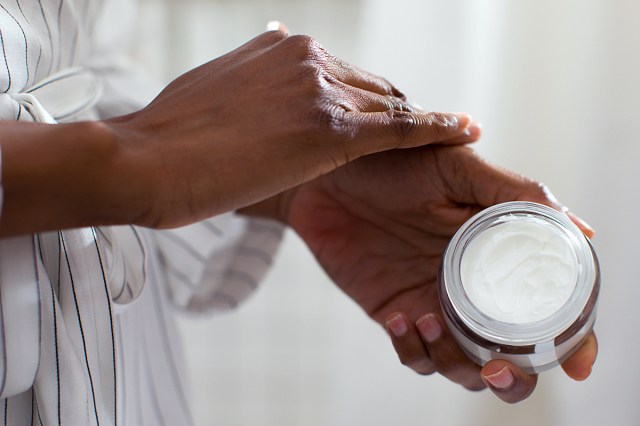
Estrogen Therapy for the Skin
Estrogen therapy is an option that may be right for some people. (More on that later.) You’ll need a prescription, though, so make this decision in conjunction with your doctor or medical team. It’s available systemically (as a patch, or a patch-and-pill combo) and in topical formulations. Supplementing estrogen sooner rather than later might help preserve skin’s collagen levels.
As for systemic estrogen therapy, “it’s been shown to reduce transepidermal water loss, which may help reduce occurrences of dermatitis and other skin conditions,” Dr. Haver says. “Systemic estrogen therapy has also been shown to increase skin collagen levels to premenopausal states and to help increase skin thickness and prevent further collagen loss.”
Dr. Haver herself uses a prescription topical estriol cream, which she also recommends to her patients. She says that studies have shown that topical estrogen can increase both elastin and collagen in your skin. If you can’t use systemic hormone therapy due to contraindications or simply choose not to, a topical cream is safe, according to Dr. Haver. “Studies done on both topical estriol and estradiol found no clinically significant absorption into the bloodstream,” she says. “And topical treatment may improve elastin more than systemic therapy.”
Whether you choose topical or systemic hormone therapy, “the increase in collagen seems to happen regardless of how estrogen is delivered to your system,” Dr. Haver says.
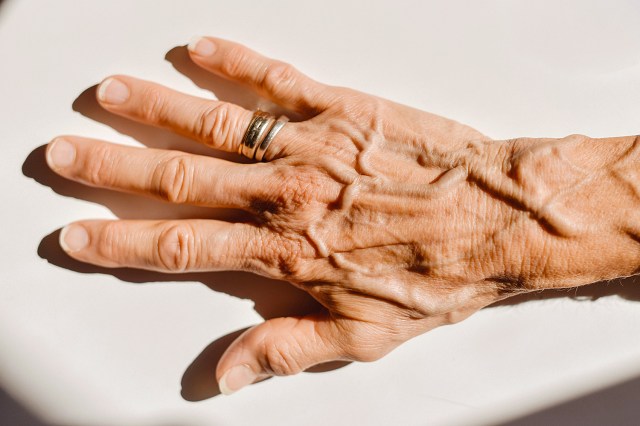
The Effect on Your Body
When you think about aging, you probably think of your face first. But many skin changes occur on your body. One big change is to the skin on your hands, as you might start to see veins and wrinkles because of the skin losing collagen and elastin, turning the texture crepey. It can help to protect your hands from sun damage with sunscreen or gloves, and to keep them hydrated.
Decreasing estrogen can also contribute to changes in the skin around more intimate areas. Vaginal estradiol cream, a low-dose topical estrogen, “is like skin care for your vagina/vulva,” Dr. Haver says. “It helps to maintain elasticity and to prevent vaginal atrophy, dryness, and genitourinary syndrome of menopause (GSM).” Some other symptoms of GSM are the frequent urge to urinate, painful urination, and incontinence.
Systemic estrogen therapy can help maintain the condition of the skin in those areas and, according to Dr. Haver, may even have a more surprising benefit to the appearance of your legs and buttocks: “Taking systemic estrogen may also be helpful in maintaining your skin’s natural collagen, thus aiding in the decreased appearance of cellulite,” she adds.
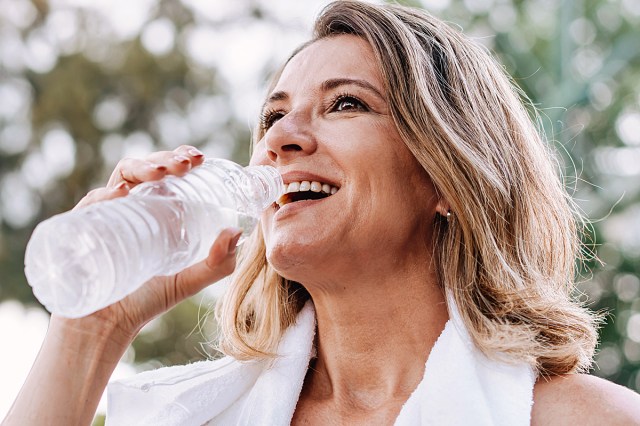
Who Shouldn’t Take Estrogen
Hormone replacement may not be safe for everyone. If you have a history of blood clots, liver disease, high blood pressure, or various cancers, it might not be advisable. Always speak to your doctor. If you decide against estrogen therapy, there are still ways to keep your skin as healthy and supple as possible.
“Your skin responds to the same practices of good health that will bring out the best in the rest of your body,” Dr. Haver says. “These include eating an anti-inflammatory diet rich in antioxidants that help protect against cellular damage, exercising to increase blood circulation,and not smoking or drinking alcohol excessively.”
Additionally, commonsense skin care for your face — washing with creamy cleansers, protecting against the sun, and using moisturizer every day — can shore up your defense against fine lines and sagging.
Here are some other skin care products that can help.
“Moisturizers with ingredients such as ceramides and hyaluronic acid can help retain moisture and hydration in the skin,” Dr. Haver says.
“Over-the-counter [products] containing 4’-acetoxy resveratrol (4AR) and equol have been shown in studies to help improve skin health and appearance in menopause,” she explains.
Dr. Haver’s own collagen supplement formula includes Verisol. She says research has shown the collagen peptide “increased levels of elastin, [is] a key precursor to collagen, and produced significant reduction in eye wrinkles.”
“Topical retinoids and alpha- and beta-hydroxy acids can improve skin texture,” she says.
This article is for general informational purposes only.
Affiliate Disclaimer Medical Disclaimer



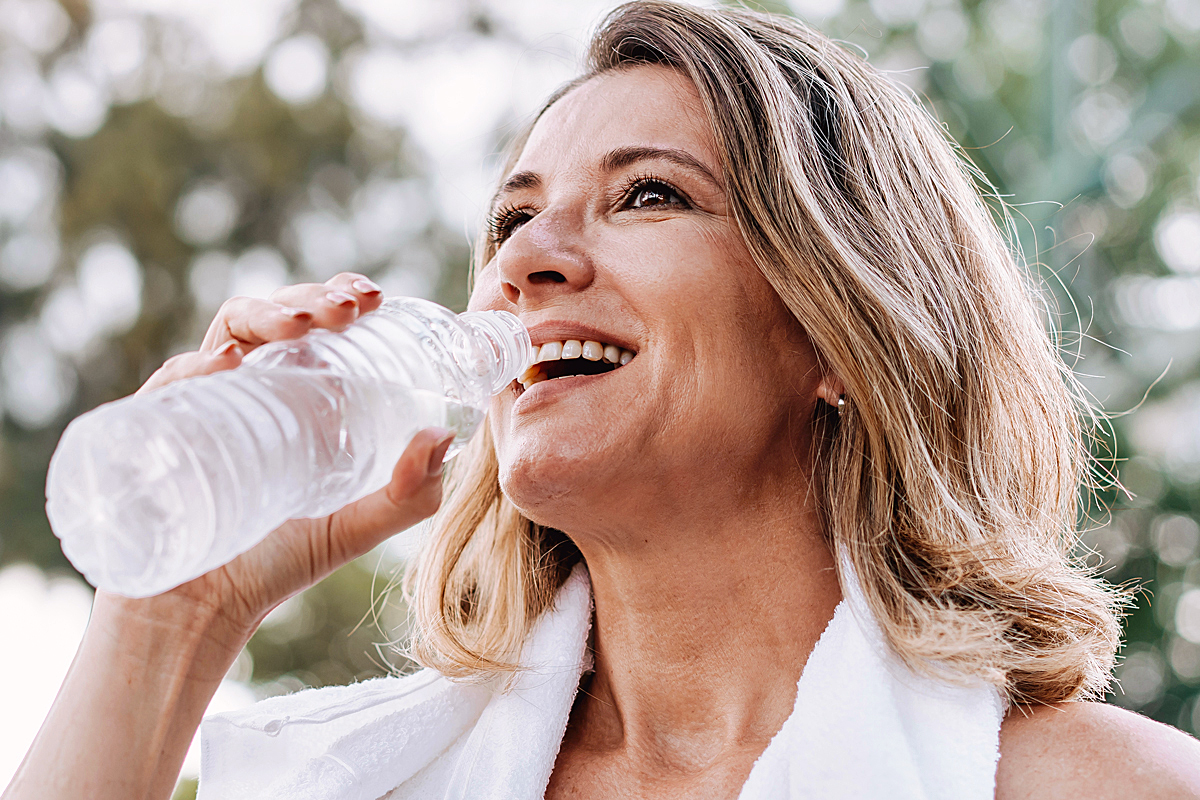




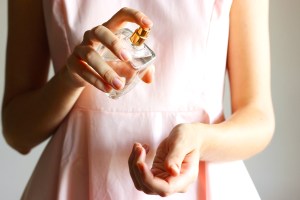
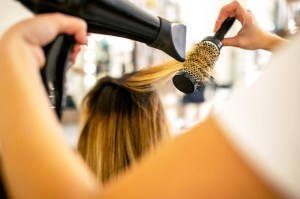
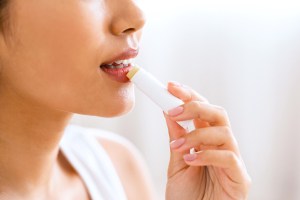
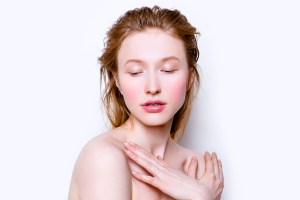
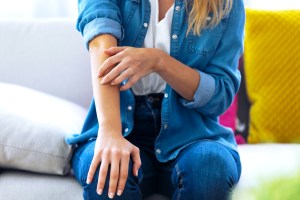

 Unique Beauty is free for all users.
Unique Beauty is free for all users.